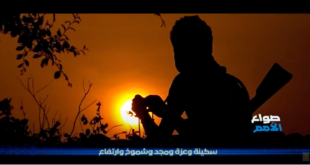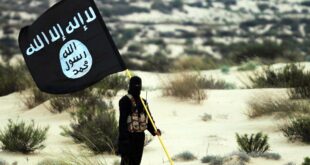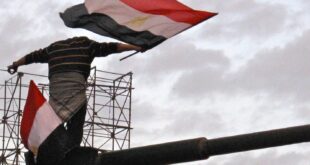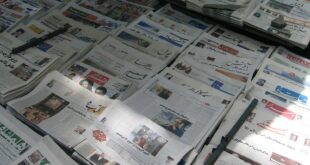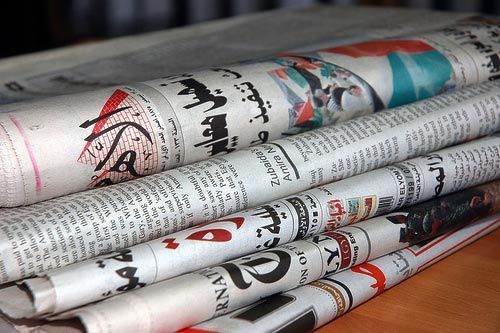Issue 32, summer/fall 2021 https://doi.org/10.70090/HME21WIA Scroll down for Arabic abstract. This study analyzes how a number of Arab newspapers approach water issues and the different perspectives they present about the water crises and water insecurity in the region. The paper examines the extent to which the framing of the topic …
Read More »The Unspoken Agenda of Houthi Digital Poetry in Yemen’s Current War Crisis
Issue 32, summer/fall 2021 https://doi.org/10.70090/AN21UAHD Abstract This article examines how the Houthi rebels in Yemen use tribal poetry as a propaganda platform to influence public opinion about the current war crisis in the country. By digitalizing Yemeni oral popular poetry, zamil, in the form of motivational war songs and YouTube …
Read More »The Role of Online Journalism in Shaping Knowledge and Attitudes of University Youth Towards Daesh’s Operations in Saudi Arabia: A Field Study (Arabic)
Issue 32, summer/fall 2021 https://doi.org/10.70090/ME21ROJS Scroll down for Arabic abstract. The study seeks to identify the role of online journalism in shaping the knowledge and attitudes of Saudi youth towards Islamic State of Iraq and Syria’s (Daesh) terrorist activities in the Kingdom of Saudi Arabia. The study used a sample …
Read More »Assessments of Controversial Representations of Religion and Religious Symbols as handled in the International Press: A Qualitative Study (Arabic)
Issue 32, summer/fall 2021 https://doi.org/10.70090/MSMS21RR Scroll down for Arabic abstract. This study uses qualitative methods to assess the analytical perspectives of the media elite; namely members of the academic and professional communities, as they relate to controversial representations of religion and religious symbols in the international press. Bearing in mind …
Read More »Peace Journalism: Egyptian Online Journalism’s Handling of January 2011 and June 2013 Revolutions (Arabic)
Issue 32, summer/fall 2021 https://doi.org/10.70090/KARS21PJ Scroll down for Arabic abstract. This study investigates how Egyptian online journalism handled the events of the January 2011 and June 2013 revolutions in Egypt, evaluating them from the perspective of peace journalism. The analysis was conducted using the following three criteria: The different ways …
Read More »Superior, Violent and Aggressive: Hegemonic Masculinity in Arabic Music Videos
Issue 32, summer/fall 2021 https://doi.org/10.70090/SH21SVAH Abstract Free access to music videos on YouTube has allowed generations of consumers to be exposed to songs from their favorite artists on a daily basis. Presented in the form of music videos, these songs contain visuals that carry several themes including the glorification of …
Read More »السياسات الإعلامية الإيرانية تجاه قضايا العالم العربي – دراسة نقدية تحليلية
مقدمة يحتل الإعلام مكانة متقدمة في أولويات النظام الإيراني الذي يعتمد على آلة ضخمة من الوكالات الإخبارية والصحف اليومية المطبوعة والمواقع الإلكترونية والقنوات الفضائية في مصفوفة سياساته الداخلية والخارجية على حد سواء، ولإن أخذ الإعلام موقعه في صدارة تراتبية صنع القرار بهذا النظام؛ فإن موقعه أكثر تقدما خاصة في رسائله …
اقرا المزيد »إشكاليات وتحديات التناول الإعلامي للشأن الصحي في العالم العربي
Issue 31, winter/spring 2021 https://doi.org/10.70090/SM21PCMC مقدمة مع تعرض المجتمعات على اختلاف مستويات تقدمها أو تأخرها، لموجات من الأمراض المزمنة والأوبئة، تثار إشكالية التناول الإعلامي المتخصص للشأن الصحي والطبي في عالمنا العربي، وما يتعلق به من أمراض وإصابات وعدوى وتشخيص ومواجهة وعلاج، وتثير تلك الإشكالية الكثير من التساؤلات الجديرة بالبحث وصولًا إلى …
اقرا المزيد »Attitudes Toward the Role of Social Networks in Shaping Health Awareness during the COVID-19 Pandemic: An Actor-Network Theoretical Study of Egypt (Arabic)
Issue 31, winter/spring 2021 https://doi.org/10.70090/KSEH21SN Scroll down for Arabic abstract. Official statistics show that Egyptians, especially the youth, are increasingly using social networks. It is therefore important to examine the role these networks had in shaping the cognitions and attitudes of Egyptians towards the COVID-19 pandemic. The present study uses …
Read More »COVID-19 Crisis Communication: The Strategic Use of Instagram Messages by the Bahraini Ministry of Health in Light of the Crisis and Emergency Risk Communication Model (CERC)
Issue 31, winter/spring 2021 https://doi.org/10.70090/NE21C19C Abstract While social media is being increasingly used for health crisis communication, few studies, especially in the Arab region, have examined how it can improve strategic communication during various phases of any health crisis. The Crisis and Emergency Risk Communication (CERC) model is one of …
Read More » Arab Media & Society The Arab Media Hub
Arab Media & Society The Arab Media Hub

